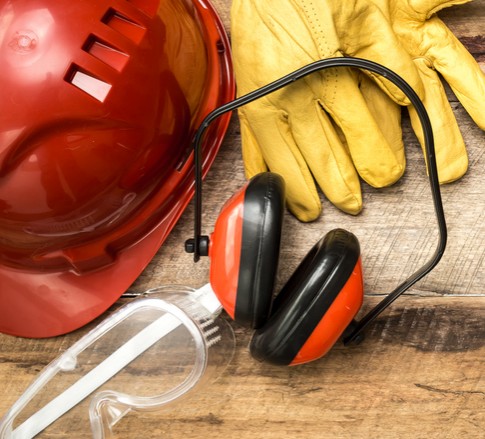COMMISSION FINDS SUSPENDED LOAD VIOLATION WHEN MINER'S PRESENCE UNDER A CRANE'S SPREADER BAR IS NOT PART OF RIGGING
April 25, 2018
For clients and friends of Jackson Kelly PLLC
Volume 14, Number 8
©2018 Jackson Kelly PLLC
In a case closely watched by the crane operating and mining industries, the Federal Mine Safety and Health Review Commission, in a 3-1 decision, held that a miner’s presence under a crane’s spreader bar violates MSHA’s suspended load standard when not connected with the rigging process. However, if rigging is occurring under the conditions prescribed by 30 C.F.R. § 56.14211, there would be no suspended load violation.
In Sims Crane, Docket No. SE 2015-315-M (Rev. Comm. April 25, 2018), the Commission considered the validity of a citation issued under 30 C.F.R. § 56.16009, which requires that “[p]ersons shall stay clear of suspended loads.” During the inspection at issue, the inspector observed a miner standing under a crane’s “spreader bar,” a lifting device attached to the crane’s hoist hook that assists in balancing heavy objects during lifting. At the time the miner was under the spreader bar, the crane operator was extending the boom to position it above the object to be lifted.
The inspector initially issued an oral imminent danger order, requiring the miner to move out from under the spreader bar. The crane operator then left the cab, walked under the spreader bar to discuss the issue with the inspector and then walked back under the spreader bar to return to the cab.
The inspector retracted the imminent danger order, but issued a Non‑S&S citation alleging a violation of § 56.16009 for failing to stay clear of a suspended load. The Administrative Law Judge (“ALJ”) upheld a violation, finding that the spreader bar constituted a “suspended load” for purposes of the standard.
The operator appealed the ALJ’s ruling, and its appeal was joined by 15 companies and industry groups as amicus curiae. The operator argued that the spreader bar is not a “load” but rather “load‑attaching equipment” outside the scope of the standard. The operator further argued that considering “load-attaching equipment” within the meaning of “suspended load,” would preclude certain tasks in the rigging process that require miners to work within the fall zone of the load‑attaching equipment.
The Secretary countered that the presence of a miner under a spreader bar constituted a violation of the suspended load standard. Notwithstanding this position, on February 6, 2017, The Mine Safety and Health Administration (“MSHA”) issued Program Policy Letter (“PPL”) No. P-17-IV-01, which states that, MSHA will not issue a citation for a miner’s presence under a suspended load if two conditions are met: (1) the miner must be “involved in the attachment of objects or materials to the load‑attaching equipment or are detaching the load” and (2) “adequate measures are in place to protect miners from hazards associated with load‑attaching equipment during these processes.”
The Commission recognized that, notwithstanding § 56.16009’s requirement of staying clear of suspended loads, two other standards – 30 C.F.R. §§ 56.14120 and 56.141211 – allow miners to work under suspended loads or objects involving mobile equipment so long as the equipment is designed to protect the miner from falling objects or certain blocking or securing measures are taken. Specifically, it noted that § 56.14211 allows miners to perform work on top of, under, or from a raised component of mobile equipment once the component has been adequately blocked or mechanically secured to prevent accidental lowering. The Commission concluded that there would be no violation of § 56.16009 if miners were rigging a spreader bar under the conditions described in § 56.141211. However, a violation of § 56.16009 may be found if a miner is present under a spreader bar when not engaged in rigging work.
In Sims Crane, a majority of the Commission found that the crane operator’s return to his cab while traveling under the spreader bar was not part of rigging work and therefore constituted a violation. Because the Commission found a violation on this basis, it declined to address whether the first miner’s presence under the spreader bar or the crane operator’s walk from the cab to the inspector while under the spreader bar constituted violations.
Commissioner Althen concurred in part and dissented in part with the majority. He joined the majority’s analysis and interpretation of § 56.16009, but disagreed that the crane operator’s return to the cab was not part of the rigging process. Therefore, Commissioner Althen would find that no violation occurred under the analysis set forth by the majority.
OCCUPATIONAL SAFETY AND HEALTH PRACTICE GROUP
Denver, Colorado
Responsible Attorney
Karen L. Johnston
303.390.0008
kjohnston@jacksonkelly.com
The Jackson Kelly PLLC Occupational Safety & Health News-Alert is for informational purposes only and not for the purposes of offering legal advice or a legal opinion on any matter. No reader should act or refrain from acting on the basis of any statement in the Jackson Kelly PLLC Occupational Safety & Health News-Alert without seeking advice from qualified legal counsel on the particular facts and circumstances involved.
If you or others would like to receive future copies of the Jackson Kelly PLLC Occupational Safety & Health News-Alert via e-mail, please send your name, job title, and company name, along with your e‑mail address, to Janet Kosman at jlkosman@jacksonkelly.com. You may also call her at 303.390.0038.
If you wish to UNSUBSCRIBE to this legal news alert list, please reply to this e-mail and type the word ‘UNSUBSCRIBE’ in the subject line.
The Rules of the Kentucky Supreme Court require the following: THIS IS AN ADVERTISEMENT.
Karen L. Johnston is responsible for the contents of this alert.



